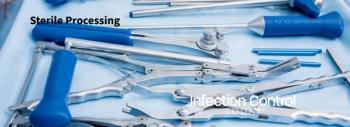
- Infection Control Today January/February 2020 Vol. 24 No. 1
- Volume 24
- Issue 1
Post-Operative Strategies for Reducing Surgical Site Infection After Cesarean Section
Data analysis showed a spike in surgical site infections (SSIs) among Cesarean section (C-section) patients between January and July in 2017 at MaineGeneral Medical Center. Following a focused postoperative infection reduction strategy implementation, we were able to lower rates by 65% over 8 months.
C-sections account for 32% of all inpatient deliveries in the United States each year. Three to 15% of these procedures result in surgical site infection, with variation stemming from the surveillance methodology and/or patient population.1 Upon completion of the 2017 annual Infection Control Risk Assessment (ICRA) for our institution, we recognized an opportunity to include C-section as one of the targeted surgical procedures for surveillance. A comprehensive review of these procedures, including entry into the National Healthcare Safety Network (NHSN) database, provided a means to compare the facilities’ expected number of infections based on multiple patient risk factors, and allowed for multifacility comparison with facilities throughout the country. The initial analysis of our C-section data unveiled an opportunity for improvement, specifically with the occurrence of superficial SSI.
There are multiple risk factors that exist pertaining specifically to the development of SSIs following C-section procedures. Pregnancy related risk factors that cannot typically be modified include: emergent delivery, prolonged rupture of membranes, or chorioamnionitis.2,3 Few evidence-based guidelines currently exist addressing post-operative wound care after discharge to prevent SSIs in this population.
Strategies currently in place in our operating room suite and C-section delivery rooms for SSI prevention include pre-operative antibiotic administration, hair removal when appropriate, adherence to the Association of Operating Room Nurses (AORN) standard for surgical attire, intra-operative skin antisepsis with an alcohol/chlorohexidine product, maintaining traffic control during procedures, and monitoring hand hygiene. Multiple closure methods are used by surgeons. These methods typically include staples, sutures, or a subcuticular closure with steristrips. All surgeons routinely used sterile gauze for the dressing.
The root cause uncovered that, upon discharge, patients were instructed to remove the gauze dressing at home. Patients were also provided written and verbal instructions for wound care and signs of infection, including erythema, increased pain/tenderness, purulent and/or malodorous discharge, or fever > 100.4. Despite these instructions, surgeons surveyed noted that the wound care instructions were not often followed and the same dressing was still in place at the 2-week post-op visit.
Postoperative factors have traditionally been considered to play a relatively minor role in causing SSIs. An increasing body of evidence suggests that many SSIs occur as a result of pathogens gaining access to surgical wounds either hematogenously or through slowly healing wounds, despite the use of routine antibiotic prophylaxis pre-operatively.4 Patients are typically discharged home within 48 hours after surgery to a variety of environments and circumstances and our surgeons indicated discharge instructions were not being followed.
Review of the current literature noted success in reducing superficial SSI rates among colorectal patient populations after the implementation of a standardized post-operative wound cleansing strategy, which included wound cleansing after dressing removal with a chlorohexidine gluconate4 (CHG) product. The strategy was cost-effective and simple enough for patients to perform on their own. A decision was made to implement post-dressing surgical wound cleansing with CHG soap (Hibiclens) in an attempt to decrease the number of superficial SSIs for patients undergoing C-section procedures.
A multidisciplinary team, including infection prevention along with a surgeon champion, worked to update patient infection reduction strategies and increase the post-operative education provided to patients. The surgeon champion was invaluable in bringing the physicians on board. Staff were educated on the new post-operative wound care process that would include enhanced discharge education for patients and how to implement.
Patient understanding of the risk for SSI in relation to adherence to instructions would be essential to ensure compliance with utilizing CHG during the post-operative period. Staff educated patients verbally on CHG product use. Since patient stays often extend to 48 hours after C-sections, wound dressings were removed and CHG was provided for use with the initial post-operative shower during their inpatient hospital stay. Post-operative discharge instructions were updated to provide explicit guidance on wound care, including specific instructions for CHG usage. In addition, signs and symptoms of infection were reviewed with the patient as previously noted. Documentation of education and distribution of 4% CHG soap was added to the electronic medical record (EMR) documentation. Patients were instructed to perform wound cleansing daily with CHG until the remainder of the product was gone, or until being instructed by their provider to discontinue use. All protocol changes were incorporated into the EMR and staff were instructed to document that patient education was given and that a bottle of Hibiclens 4% foam was provided.
Process adherence was reviewed through the continuum of care both to monitor the current state of compliance and identify potential gaps with the evidenced-based guidelines in use. C-section procedures during the baseline and intervention periods were surveyed for 30 days post-operatively.
Data to identify superficial SSIs included:
§Documented information included in the EMR;
- Post-partum emergency room (ER) visits;
- Readmissions;
- Testing results;
- Clinician record notes;
- Wound culture results;
- Post-operative questionnaires sent to all OB/
- GYN providers requesting identification of all superficial SSIs;
- Compliance information collected via patient phone calls.
During the trial period, patients were contacted with the following questions:
1. Was Hibiclens product provided upon discharge?
2. Have you been utilizing the product?
3. Can I address any questions/concerns you have about the product?
Phone inquiries included discussions regarding patient compliance with dressing removal and daily wound cleansing utilizing CHG. Any issues or concerns with the post-operative wound care protocol were noted along with any signs/symp- toms of infection.
C-section superficial surgical site infections were identified utilizing NHSN criteria.6
Tracey Shaw started her career in healthcare as a laboratorian prior to moving into the field of healthcare quality, and more specifically infection prevention. Her passion is to improve patient quality and safety across the continuum of care by educating families, patients, and staff on strategies to mitigate risk of healthcare-acquired infections.
References:
1. Hsu CD, Cohn I, Caban R, et al. Reduction and sustainability of cesarean section surgical site infection: An evidence-based innovative and multidisciplinary quality improvement intervention bundle program. Am J Infect Control. 2016 Nov 1;44(11):1315-1320. doi: 10.1016/j.ajic.2016.04.217. Epub 2016 Jun 14.
2. Temming LA, Raghuraman N, Carter EB, et al. Impact of evidence-based interventions on wound complication after cesarean delivery. Am J Obstet Gynecol. 2017 Oct;217(4):449.e1-449.e9. doi: 10.1016/j.ajog.2017.05.070. Epub 2017 Jun 8.
3. Money L, Eyer M, Duncan K. Creating a surgical site infection prevention bundle for patients undergoing cesarean delivery. AORN J. 2018 Oct;108(4):372-383. doi: 10.1002/aorn.12371.
4. Manian, FA. The role of postoperative factors in surgical site infections: time to take notice. Clin Infect Dis. 2014 Nov 1;59(9):1272-6. doi: 10.1093/cid/ciu552. Epub 2014 Jul 14.
5. Cima R, Dankbar E, Lovely J, et al. Colorectal surgery surgical site infection reduction program: A national surgical quality improvement program driven multidisciplinary single-institution experience. J Am Coll Surg. 2013 Jan;216(1):23-33. doi: 10.1016/j.jamcollsurg.2012.09.009. Epub 2012 Nov 2.
6. Centers for Disease Control and Prevention. Patient Safety Component Manual. CDC website. https://www.cdc.gov/nhsn/pdfs/pscmanual/psc-january-2019-revisions-508.pdf. Published January 2019. Accessed December 2019.
Articles in this issue
almost 6 years ago
January/February 2020 Bug of the Monthalmost 6 years ago
Preparing for Special Pathogens: An IP Perspectivealmost 6 years ago
Copper Beds Vastly Cut Down on Amount of Surface BacteriaNewsletter
Stay prepared and protected with Infection Control Today's newsletter, delivering essential updates, best practices, and expert insights for infection preventionists.





